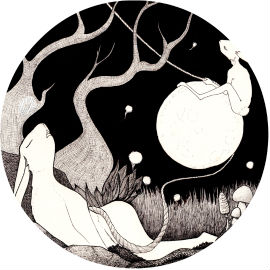Rembrandt’s astonishing painting of the anatomy lesson is temporarily housed at the Gemeentemuseum in The Hague. I couldn’t wait to see this painting. In fact, I’m afraid I rushed through rooms full of many of the other paintings that are temporarily housed there while the Mauritshuis is being renovated just to find it. (I did go back afterwards and spend a little time with all of the amazing loan works on display).
What is it about this painting? First of all, it’s a beautifully executed work. The way the actors are all suspended between light and dark, movement and stillness, attention and distraction moves me. The solemnity of the work is clear, but the dynamism of the composition works against that solemnity. Although a dissection might seem macabre, I also read in this work the thrill of discovery, or learning, of the experience of seeing into things that have up until then been mysteries.
Rembrandt completed this painting, on commission, when he was quite young. About 25 years old. It was an important commission, and an important work in terms of establishing his reputation. The work is flawed (more of that later) but courageous, full of the drive for a fresh way of seeing that makes a painter’s reputation, even now.
Commissioned group portraits of anatomy lessons had been done before. Looking at those earlier portraits reveals something of Rembrandt’s fresh approach. Dutch painters of the time were distinctly different from their pan-European peers. Calvinist Protestantism meant that their range of subject matter was subtly unique. They were, as a society, focused on a practical, modest and socially conservative way of life. But at the same time were on the way to becoming the energetic and highly successful world traders in luxury textiles, spices, flowers and other plants. Art had a central role in Dutch society as a way of demonstrating wealth and beautifying both public and private spaces, and yet the church discouraged artists from concentrating on the subjects familiar to, for example, French and Italian painters of the same period: particularly religious and mythological narrative paintings, and religious iconography. Instead, the Dutch painters of the period focused on still lifes, landscapes*, and portraits. Commemorative group portraits, for which each sitter paid a fee) were a common occurrence. Each of the physicians in this painting would have paid to be included in it. The painting commemorates the anatomy lesson partly because the lessons were rare and valuable experiences: they occurred once a year, and were performed using the body of an executed criminal who would, afterwards, be given a full Christian burial. Any member of the public could attend the lesson, which was held in the weigh house in Amsterdam Square, for fee. Prominent Amsterdam citizens, including burghers, council members, and intellectuals, vied for a place.
Previous anatomy lesson portraits show all of the students, and the dissector, lined up against a dark background, their features disappearing into dense fields of darkness. The body being dissected disappears visually, or is absent altogether. But is also luminous, almost incandescent. The body is, of course, that of a criminal: Aris Kindt (his real name was Adriann Adriannszoon. Kindt is an alias), an armed robber who was executed by hanging. Kindt was hung for stealing a gentleman’s cloak. The date of the painting’s commencement can be dated fairly precisely because of the presence of this particular body: Kindt was executed in January, 1632 (sources disagree on the exact date. The 16th and 31st are the most cited dates). Kindt’s face is partially shaded, perhaps a reflection of both the dark-face of a man who has been strangled to death, and an example of Rembrandt’s ongoing experiments with umbria mortis. Kindt was the same age as Rembrandt – a young thief, whose life was cut short. I wonder, looking at this painting of revered and largely older gentlemen, whether Rembrandt might have felt that connection.
The painting is not technically or historically perfect, and perhaps was never intended to be. It is a work of art, and only incidentally a historical record. Some curious choices are reflected in the composition and technique. For one, an anatomy lesson at the time traditionally began with the Y-incision that opens the chest. Here, the anatomist has begun with a dissection of the subject’s left arm. In fact, it is highly unlikely that Tulp would himself have performed the dissection. His role was as more of a narrator, conductor, lecturer. A Preparator would have done the work itself, while Tulp stood to the side, instructing the Preparator and speaking to the wide audience about the details of what the opening up of the body revealed about the human body.
Aris Kindt’s hands had been cut off prior to his execution. Perhaps as a reflection of this, the right hand of the body, in particular, is quite distinct in colour and texture to that of the rest of the body.
This early painting by Rembrandt is an impressive work not just because of how well it is executed, but because of the departure it represents from earlier models and styles. Here, Rembrandt shows us his potential by demonstrating his ability to see something familiar – a familiar subject – in a new way. To re-envisage the old forms, and re-present them to the viewers’ eye in an altered-but-familiar shape. Here, I think, Rembrandt inhabits the Poundian dictum to Make it New, with grim grace, attentiveness and bravado.
*The word ‘landscape’ enters English as a result of the popularity of Dutch landscape painting, which were (and are) called landschap paintings in Dutch.


No Comments